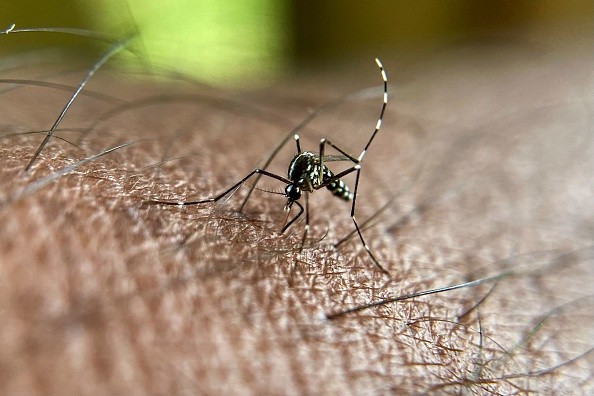The Intergovernmental Panel on Climate Change (IPCC) issued a harsh warning on Monday that the time to adapt to climate change is running short.
According to a recent assessment from the scientific council, the warming that has occurred so far - around 1.09 degrees Celsius (1.96 degrees Fahrenheit) over pre-industrial levels - is already having "widespread, pervasive repercussions" on people worldwide.

Warning from Warmings
The paper cautions that global warming has consequences for humanity beyond affecting the weather and melting the ice caps. It also has far-reaching ramifications for how insects and other species travel throughout the planet, interact, and carry illness to humans.
According to the paper, "climate-sensitive food-borne, water-borne, and vector-borne illness risks are anticipated to rise at all degrees of warming." (Vector-borne illnesses are carried by blood-sucking insects such as ticks and mosquitoes.)
Furthermore, global warming has already resulted in enormous disease consequences worldwide. Climate change isn't just a distant threat; it's already making people sick.
"One of the most startling outcomes in our analysis is that unfavorable repercussions are far more pervasive and worse than projected in past assessments within the current 1.09 degrees," Camille Parmesan, a coordinating lead author of the paper, told reporters on Sunday.
"Some of the things we're seeing now that we weren't expecting at 1.09 degrees are illnesses spreading to new locations."
Related Article : Experts Warn of Another Deadly Global Outbreak to Strike Within 60 Years
Disease-Carrying Insects
Because disease-carrying insects and other creatures spend so much of their life in the same spot, certain illnesses are endemic to certain places.
Lyme disease, for example, is carried by black-legged ticks, which are small, eight-legged, blood-sucking organisms found in the Northeastern United States and other regions of the Northern Hemisphere.
However, climate change is wreaking havoc on the environmental conditions that limit these ticks regionally. Warming temperatures and changing weather patterns across the United States make it easier for ticks to spread and spread into new places where individuals and clinicians treating them are unfamiliar with Lyme disease.
According to the research, ticks are preying on larger areas of the population and becoming more widespread.
According to the paper, climate change will continue to contribute to the geographical expansion of the Lyme disease vector.
Similar Stories
Similar stories are being told in every part of the world, as illnesses emerge in previously unknown locations.
Dengue fever, a mosquito-borne tropical disease that causes fever, headache, and vomiting and has a 20% mortality rate if left untreated, is expected to become a bigger risk for people in Asia, Europe, Central, and South America, and Sub-Saharan Africa as the warm season lengthens and the aedes aegypti mosquito expands its geographic range.
On Sunday, Kristie Ebi, an epidemiologist at the University of Washington and a co-author of the paper, stated, "There are projections of billions of more individuals at risk of dengue fever later in the century."
Worsening Climate Change
As climate change worsens, other mosquito-borne diseases such as Zika virus, Chikungunya disease, and West Nile virus are in danger of becoming more frequent.
Vibriosis and cholera, which cause nausea, diarrhea, and vomiting, are dangerous water-borne infections. Diarrheal diseases have decreased globally due to improved medicine distribution and low-tech medical interventions such as treating patients orally with a mixture of water, glucose, and salts.
Still, the report notes that increased rainfall and flooding in many regions have increased diarrheal diseases like cholera and other gastrointestinal infections.
If present illnesses aren't frightening enough, thawing permafrost and coastal erosion in the Arctic might expose historical cemeteries, campsites, and reindeer burial places, exposing old diseases to which modern humans are immune.
The paper's authors admit that putting a number on future climate-related mortality is challenging. Still, they estimate that by 2050, 250,000 more people would die from heat, malnutrition, malaria, and diarrheal illness combined.
Hundreds of diseases are already present, and more will arise in the following years, adding to the death toll.
Feasibility
It is feasible to reduce the burden of sickness on individuals, but the research warns that time is running out to make the required changes.
Producing vector-borne disease surveillance systems, establishing early warning systems to alert communities to those diseases and the prevalence of novel vectors, and developing medicines to inoculate individuals against vector-borne illnesses are essential contributions to the preparation arsenal.
The research suggests that governments enhance access to potable water and safeguard water and sanitation infrastructure against flooding to adapt to water-borne and food-borne infections.
Protecting and conserving natural places like wetlands, peatlands, and forests from human development provides the dual benefit of sequestering carbon dioxide while minimizing disease transmission to humans by restricting interaction between wild animals and people.
Concerns
According to Zak Smith, head of the Natural Resources Defense Council's wildlife program, governments are typically unwilling to take the required precautions to safeguard public health from the increasing danger of illness caused by climate change.
For more animal news, don't forget to follow Nature World News!
© 2025 NatureWorldNews.com All rights reserved. Do not reproduce without permission.





